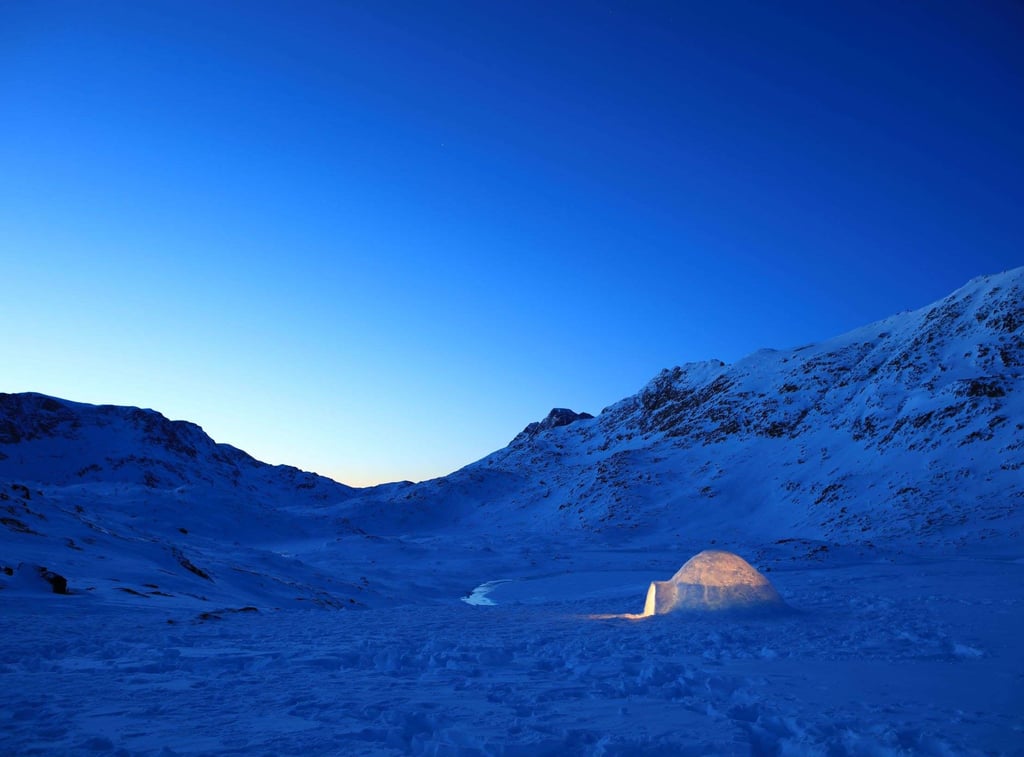From Ice to Innovation:
Lessons from The Last Igloo for the Future of Habitat Design
10/9/20254 min read


In the documentary The Last Igloo, we follow a solitary Inuit hunter as he constructs an igloo, fishes beneath the ice, and lives in harmony with one of Earth’s harshest environments. There are no machines, no pre-packaged materials, and no backup power. Everything the man builds, from his home to his tools, comes from what surrounds him.
The film is hypnotic in its simplicity. In a world defined by scarcity, survival depends not on abundance, but on intelligence, adaptation, and respect for nature’s constraints. It’s an ancient philosophy, and one that feels startlingly relevant as we look toward the Moon and Mars.
Limited Resources, Infinite Ingenuity
The Arctic and Mars share more in common than one might expect. Both are cold, resource-scarce, and hostile to human life. Both demand total self-sufficiency and force us to ask the same question: How do we live sustainably in an environment that doesn’t want us there?
In The Last Igloo, the builder’s greatest resource is not the snow or ice itself, but his understanding of it — how it cuts, how it stacks, how it insulates. His structure is thermally efficient, airtight, and temporary — designed not for permanence, but for survival through the cycle of the seasons.
At Plan R, we see this same principle as foundational to extraterrestrial architecture. Our Stage 2 habitat systems — designed for long-term living within lava tubes and subsurface environments on the Moon and Mars — embrace environmental symbiosis. Instead of bringing everything from Earth, we adapt to what’s already there: ice, regolith, mineral deposits, and geometry itself.
The lesson of The Last Igloo isn’t just about surviving with less. It’s about thriving by understanding — using constraints as creative fuel.
Ice as Structure and Shield
Ice, paradoxically, is one of the most promising building materials for future space habitats. It’s abundant on Mars, easy to process, and — as the Inuit demonstrate — incredibly versatile.
In the Arctic, ice provides both shelter and insulation. On Mars, it offers the same dual role, but with a new layer of protection: radiation shielding. A few metres of ice can block harmful cosmic rays, while still transmitting diffuse natural light — creating interior environments that are safe, stable, and psychologically beneficial.
Several NASA and ESA concept studies (like the Mars Ice Home) have proposed 3D-printed ice domes as temporary habitats. Yet the greater innovation may come from integrating ice into subsurface environments, combining natural topography with engineered materials — a direct echo of the igloo, where snow walls are reinforced by the curvature of the landscape.
The Last Igloo reminds us that sometimes the most advanced technology is simply mastery of the environment.
Local Resources: The New Supply Chain
For millennia, human architecture has evolved through resource immediacy: we built with what we could find — timber, stone, clay, snow. It’s only in the last few centuries that architecture became dependent on global supply chains. In space, those chains collapse. The cost of transporting one kilogram to Mars can exceed $10,000; every gram counts.
This is why Plan R’s research focuses on in-situ resource utilization (ISRU) — using what’s on site to build what’s needed.
In the Arctic, this means carving ice and snow.
On the Moon, it means sintering regolith with solar energy.
On Mars, it means combining regolith composites, ice structures, and inflatable membranes to create layered, adaptive habitats that grow over time.
The igloo builder and the space architect share a single truth: sustainability is not about abundance, but precision — knowing exactly how much of what is needed to survive.
Cultural Continuity in Harsh Environments
There’s a poetic symmetry in linking ancient Arctic craft to future off-world engineering. Both are acts of cultural endurance — the preservation of life, skill, and meaning in isolation. The Last Igloo shows that human survival is not merely technical; it is emotional, ritualistic, and aesthetic.
At Plan R, our approach to habitat design draws inspiration from that humanistic thread. Beyond structure and systems, we study how light, sound, and material touch can sustain morale and community in confined, alien spaces. Just as the Inuit’s igloo becomes a place of warmth and story, our Stage 2 habitats aim to be more than machines for living — they are environments for being.
From the Ice to the Stars
The simplicity of The Last Igloo is deceptive. Behind each movement lies a lifetime of inherited knowledge — survival wisdom encoded in gestures and decisions. The same will be true when humanity leaves Earth. Our success will depend not on how much technology we carry, but on how well we adapt what we know.
As Plan R develops modular, inflatable systems that integrate with natural formations — lava tubes, ice caverns, or subterranean voids — we see the parallels with Arctic life as both humbling and inspiring. The solutions of the past become blueprints for the future.
Conclusion: From Caves of Ice to Habitats of Tomorrow
Like the Inuit builder shaping snow into shelter, Plan R’s mission is to shape the raw materials of alien worlds into sustainable architecture.
We stand at a threshold between tradition and innovation — rediscovering what our ancestors already knew: the environment itself can be our greatest ally.
The first habitats on Mars may look less like the shining colonies of science fiction and more like the igloos of old — humble, beautiful, and perfectly in tune with their surroundings.
It’s a reminder that humanity’s future may begin not in the stars, but in the quiet, echoing spaces beneath them.